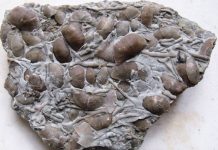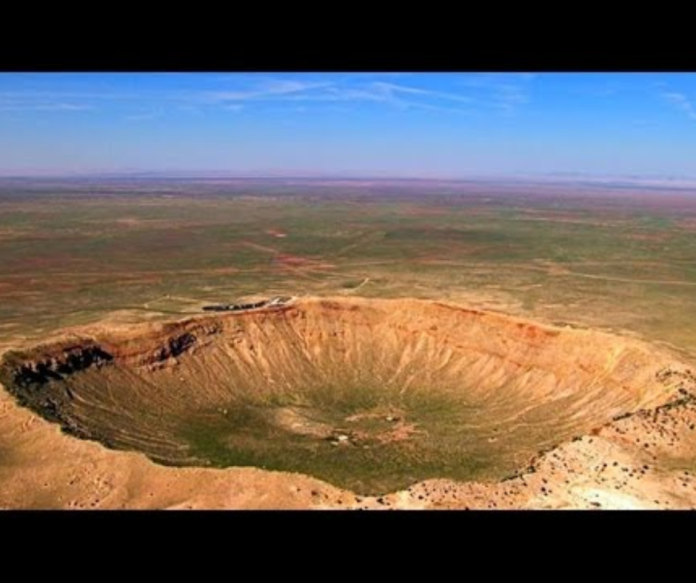
The meteor crater in Arizona was created some 50,000 years ago when an asteroid sped through space at 30,000 miles per hour, headed straight for planet Earth. Measuring about 150 feet in diameter and weighing 300,000 tons, it entered the Earth’s atmosphere at an altitude of 60 miles where the intense heat of atmospheric friction and compression caused it to glow. As its surface heated to 5000°F. (twice the melting point of iron), it began to melt, vaporize and fragment. Seconds later the remnants of the asteroid, preceded by a monumental atmospheric shock wave, slammed into Earth.
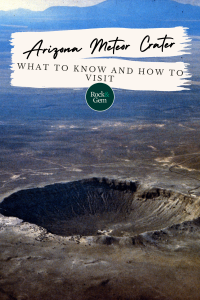
The Crater
At the time, no humans were around to witness the impact. But today a quarter-million people each year visit the Meteor Crater in Arizona, located 35 miles east of Flagstaff and just south of the “Meteor Crater” exit on Interstate 40.
Seen from a distance, the crater rim appears as a barely noticeable low ridge. But from atop the rim, the view into and across the crater dramatically conveys the cataclysmic nature of the event that created it—a meteoric impact that released the energy of a 20-megaton hydrogen bomb.
This impact instantaneously ejected some 175 million tons of limestone and sandstone, leaving a crater three-quarters of a mile in diameter, a rim rising 200 feet above the surrounding plain, and a crater floor extending 700 feet below the plain. Erosion has since reduced the rim’s height by about 60 feet, while sedimentation has filled in 100 feet of the crater floor.
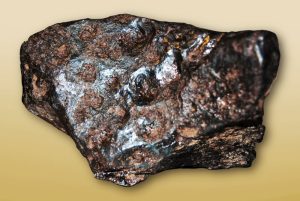
Courtesy Wikimedia Commons
A Would-Be Iron Mine
Initially, Arizona‘s Meteor Crater, as it is popularly known, was thought to be of volcanic origin. In 1891, when the then-radical theory of meteoric origin was widely disbelieved, the United States Geological Survey’s chief geologist presented a formal paper explaining how the crater was a product of a “volcanic steam explosion.”
Among the impact theory’s few early proponents was Daniel Barringer, a geologist who had made a fortune from Arizona silver mining. Barringer arrived at the meteor crater in Arizona in 1903 with two goals. One was to scientifically prove the craters’ meteoric origin. And, convinced that a huge and valuable mass of meteoric iron lay beneath the crater floor, he wanted to develop a commercial iron mine.
Barringer founded the Standard Iron Company and filed mining claims on one square mile of land surrounding the crater. Over the coming years, he explored the crater by sinking a shallow shaft and core, drilling to a depth of 1,376 feet. When Barringer died in 1929, he still had not found his hoped-for mass of meteoric iron. Nevertheless, his work helped convince both the public and scientists that the crater was the result of meteoric impact. Ownership of the crater was then passed on to the family-owned Barringer Crater Company.
Although Barringer and others had collected more than 30 tons of meteoric iron-nickel fragments from the surface within a few miles of the crater, a mineable metallic mass simply did not exist. Most of the original asteroid had not survived the extreme temperatures, pressures and stresses of atmospheric entry and impact.
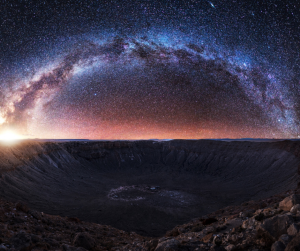
Courtesy Barringer Crater Company
A Field Laboratory
While the crater is popularly known and promoted as the Arizona Meteor Crater, scientists refer to it as the Barringer Crater. Its thousands of associated meteorites, many displayed in museums around the world, are called Canyon Diablo meteorites, after the name of a nearby drainage.
As the Earth’s most readily accessible and thoroughly studied impact crater, the Barringer Crater has been a scientific bonanza for geologists, astrogeologists and mineralogists. Physicists estimate that the pressure at the moment of impact topped 300,000 pounds per square inch. This was 20,000 times greater than normal atmospheric pressure and enough to create two rare polymorphs of quartz: coesite and stishovite, which were discovered at the crater in the 1960s.
Both these minerals, which are chemically identical to quartz, occur on Earth almost exclusively at impact craters. Crystallizing in the monoclinic system, coesite is much harder and somewhat denser than quartz. Stishovite crystallizes in the tetragonal system and is twice as dense as quartz, but a bit softer.
Also found at the Barringer Crater is “shocked” quartz — quartz that has been deformed along its internal crystallographic planes. These deformation features, called “shock lamellae,” appear as linear patterns under a microscope.
As an educational and research site, the Barringer Crater continues to provide scientists with new insight into everything from cratering mechanics to shock effects on mineral crystals. Since the late 1960s, the crater has also served as a training site where NASA astronauts develop specialized skills for traversing, sampling and surveying lunar craters.
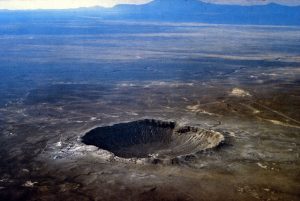
Courtesy Wikimedia Commons
Visitors Welcome
In 1967, the meteor crater in Arizona was still privately held by the family-owned Barringer Crater Company and was designated a national natural landmark. Today, the Meteor Crater Visitor Center, located at the outside base of the crater’s north rim, includes the Discovery Center and Space Museum, a movie theater that presents informative documentaries on crater formation, a gift shop, observation stations, walkways atop the rim and daily guided tours of the rim.
Visitors can touch one of the most interesting displays — the 2.5-foot-long, 1,409-pound Holsinger meteorite, the largest of the many Canyon Diablo meteorites. But most memorable is the striking view from atop the rim across the interior of the crater that enables visitors to sense the magnitude of the ancient impact that created the Earth’s best-preserved meteoric crater.
This story about the meteor crater in Arizona previously appeared in Rock & Gem magazine. Click here to subscribe. Story by Steve Voynick



